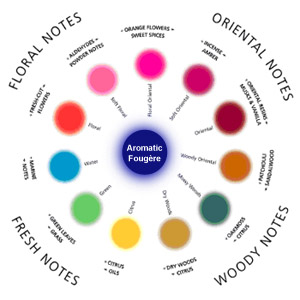
The Egyptians
- Egyptians, during the Queen Sheba's rule [queen of Yemen and Etheopia], may have been the first to incorporate perfume into their culture.
- From the religious ceremonies involving the burning of incense to the embalming of the dead, perfume was an integral part of the Egyptian life.
- "The most important perfume used by the Egyptians was the kyphi. Scholars claim that when the tomb of Tutankhamen was opened, this was the odor that issued forth" (Kaufman, 1974, p. 34).
- Scents like the fragrant myrrh were considered more precious than gold. The gifts of the Maji included frankincense and myrrh.
- Egyptians anointed their bodies with the scents of cinnamon and honey.
- Depicted on the walls of the temple of Edfu, one can also see the depiction of the art of floral extraction as perfume is distilled from the flowers of the white Madonna lily. This "essential accessory" was reserved mostly for the powerful and the wealthy. Both men and women alike wore the precious scents.
The Persians
- In Persia, perfume was also a sign of rank. In the palaces one could see kings with crowns of myrrh and of labyzuz and smell the aromas of sweetly smelling scents drifting in the air of their apartments.
- In the backyards of homes belonging to the wealthy, one could find exquisite gardens holding jasmine, lilacs, violets, and the famous red rose.
- Red rose petals covered the floor when Cleopatra first met Mark Antony.
- The red rose would become the symbol of the House of Lancaster during the War of the Roses.
- It was known all over the world for its perfume which increased in intensity as the petals dried. The Persians began to master the art of preservation by placing the rose buds in sealed earthenware jars to be later opened for a special occasion.
- Persians also used perfumes after bathing. One could smell civet on a man's beard and musk placed on other parts of the body.
The Greeks
It was not until after Alexander the Great defeated Darius III of Persia and moved into Egypt that he adopted the use of perfumes. It is said that his floors would be sprinkled with scented waters and that his clothes were imprinted with the perfumes of fragrant resins and myrrh.
In Homer"s Ulysses, one can read about the practice of anointing the dead bodies with scented oils.
During weddings, the bride"s maidens wore crowns of hyacinths.
Perfume was an integral part of Greek society, even though some of the greatest philosophers like Socrates thought them "effeminate".
- However, Greeks also made their mark on the world of perfume. They played an important role in the science of perfume b catagorizing them by the part of the plant from which they were made and documenting their compositions.
The Romans
- The Romans first celebrated scent around 750 B.C. in religious ceremonies to celebrate the goddess of Flora. Each year the ceremonies would be held to celebrate the first flowers of the season. Later, the ceremony was held each year on April 28, four days before May Calendar (this celebration was adopted by the British and is still popular today known as May Day).
- The Romans were also known for their gardens, but the flowers were mainly used for garlands to be worn in maidens' hair.
- When the Roman’s began their world conquest they, as Alexander the Great before them, began to adopt the use of perfume into their own culture. Greek influence was especially prominent in the use of perfume in religious ceremonies.
- As the Roman culture began to adopt the use of these scents, one could see its effect everywhere.
- In the Senate House, the "world's first parliament"
- the Alter of Victory was sprinkled with incense before the day's commencing business.
- The practice of shaving began here also, and after the razor performed its duty, the face would be massaged with scented unguent.
- In the famous Roman baths, one would be massaged with oils and ointments after cleansing in the warm waters.
- In banquet rooms, vines grew over the roofs and leant their fragrance to diners.
- Of course no meal was served unless accompanied by fragrant flowers and waters.
- The Marquis de Frandipani, who traveled with Columbus on his voyage to the New World, brought back to Italy one of the most popular perfumes distilled from the West Indies flower, the Plumeria alba.
It was Constantine the Great that brought the use of scents into the Christian church. He had oils and incense burned in the chur
ch of St. John-in-Lateran, which was the home to the early Popes for thousands of years.
Eastern Cultures
- Mohammed, centers his religion on the enjoyment of material pleasures, including perfume. He promised his believers the Garden of Paradise where the most exotic perfumes are to be found. The Koran speaks of those who make the journey across the razor-edge thin bridge of Al Sirat will drink from waters that are "whiter than milk, more perfumed than musk". (see Genders, 1972, p. 100)
- It was an Arabian doctor, Avicenna, who was the first to obtain the oil from flowers, known as attar, by distillation. Before this revolation, perfumes were derived from the bark of twigs and shrubs in the form of resins. His works were faithfully followed by other chemists, soon becoming general practice.
- Visitors to Arabian homes would be sprinkled with rose water as a mark of esteem. Their coffees would be flavored with the otto of roses. A bowl of charcoal would be passed around after the meal and sprinkled with incense in which the guests garments would be wrapped. When the guests left, they would have their beards and garments sprinkled with incense as a parting gesture.
- In India, perfumes also play a major role in their culture. Plants have always abounded in their country and the Hindu have adapted their scents in their religion. The flames meant for sacrifices would be sending out sweet scents of ointment and herbs. A huge bull in the temple at Tanjore in Madras is rubbed each day with perfumed oil until he gleams.
- In Hindu marraiges, the bride is rubbed with unguents by her handmaid and later the married couple will sit beneath a silk canopy enveloped by the smells of sandalwood and other delicious fumes. The god of love, Kama, is always shown carrying his cupids bow and his five arrows which are each tipped with a fragrant blossom. The scent of patchouli was used later to scent Indian shawls. When the British began to copy them, the shawls could not be sold unless accompanied by the fragrant scent.
- In China, incense is also used in religious ceremonies such as the death of family. The body would be washed and perfumed and incense would be lit in the room. The mourners would carry lighted sticks scented with incense during the processional.
- China is also known for its vast appreciation of flowers. Chi Han was the first to record flowering plants and we can see the presence of the fragrant jasmine, which may have been spread to China by India.
- Chinese women wore their hair in buns that were wrapped with flowers whose fragrance would last until dawn.
- Appreciation of scents such as sandalwood spread also into Japan. The Japanese religion Shinto uses the burning of incense and other gums during ceremonial occasions. The appreciation of ylang-ylang and ambrette also was popularized here.
Into Modern Times
From ancient hyroglyphics to Socrates to Shakespeare, perfume’s presence is documented in great works of art and literature. In 1190 the first record of perfume sellers was recorded in Paris by the first registered letters of patent granted by Henry VI of England and France. Perfumes continued their ascent into cultures today.Making Perfume
The art of perfume is compared to music, with different notes all combining to create harmony.
Perfumes are composed of three notes:
notes of the head (top notes)
notes of the heart (middle notes)
notes of depth (base notes)
The top notes are the most volatile and evaporate the fastest, hence the name "notes of the head". Each of the notes creates is its own scent, yet blends with the others to create a smell, an emotion.
Bibliography
Ackerman, Diane.(1991) A Natural History of the Senses. Vintage Books, New York. ISBN number 0-679-73566-6.
Bedoukian, Paul Z. (1967) Perfumery and Flavoring Synthetics. 2nd edition. Elsevier Publishing Co., Amsterdam.
Genders, Roy. (1972) A History of Scent. Hamish Hamilton Ltd., London. SBN number 241-01906-0
Hwang, Suein L. (1994) "Marketing: Seeking Scents That No One Has Smelled". The Wall Street Journal, August 10, 1994, B1.
Kaufman, William F. (1974) Perfume. E.P. Dutton & Co., Inc., New York. ISBN number 0-525-49506-1
LaGallienne, Richard.(1928) The Romance of Perfume. Richard Hudnut, New York.
Lefkowith, Christie Mayer. (1994) The Art of Perfume. Thames and Hudson, Inc., New York. ISBN number 0-500-23686-0
Moran, Jan. (1994) Fabulous Fragrances. Crescent House Publishing, Beverly Hills. ISBN number 0-9639065-5-0
"Names That Smell". American Demographics, August 1995, p. 48-9.
Verrill, A. Hyatt. (1940) Perfumes and Spices. L.C. Page & Co., Inc..
This post is an edited version of a wonderful article I found @ about.com; written by, Shannon L. Karppinen
Note from the author:
From my first days in high school on, I became captured by the allure of perfume. My first perfume was Estee Lauder's Beautiful. The moment I put it on I became something purer, more perfect. Was it the aroma rising off my wrists and neck or was it the advertisements with the beautiful model encased in a dreamy white wedding dress? After a while I became tired of the light and airy scent and moved on to something I perceived as darker and more dangerous. Calvin Klein became my brand of choice as I wore both his Obsession and Escape fragrances. The musky tones made me feel sexier, more of the woman I was becoming. These impressions were ingrained by the bordering pornographic ads greeting me in magazines. For a while I would wear the scent that I felt matched my mood, shifting between what I felt was the perception I wanted to create that day - the more professional smelling Lauren or the sensuous Rapture by Victoria's Secret? It has only been in the past year that I have found what I consider to be my "signature fragrance". One that taps lightly, not pounds upon the senses, slowly working its way into the mind. It has a hint of musk, yet flirts with flowers. Will I stick with this scent? Who knows? My sense of smell is changing everyday as I grow older, experiencing, deepening, and one day diminishing.








1 comment:
I was definitely agree that the art of perfume is compared to music, with different notes all combining to create harmony. Good that you shared this so informative blog.
cletsey
Post a Comment